- Region
- Águilas
- Alhama de Murcia
- Jumilla
- Lorca
- Los Alcázares
- Mazarrón
- San Javier
-
ALL AREAS & TOWNS
- AREAS
- SOUTH WEST
- MAR MENOR
- MURCIA CITY & CENTRAL
- NORTH & NORTH WEST
- TOWNS
- Abanilla
- Abarán
- Aguilas
- Alamillo
- Alcantarilla
- Aledo
- Alhama de Murcia
- Archena
- Balsicas
- Blanca
- Bolnuevo
- Bullas
- Cañadas del Romero
- Cabo de Palos
- Calasparra
- Camping Bolnuevo
- Campo De Ricote
- Camposol
- Canada De La Lena
- Caravaca de la Cruz
- Cartagena
- Cehegin
- Ceuti
- Cieza
- Condado de Alhama
- Corvera
- Costa Cálida
- Cuevas De Almanzora
- Cuevas de Reyllo
- El Carmoli
- El Mojon
- El Molino (Puerto Lumbreras)
- El Pareton / Cantareros
- El Raso
- El Valle Golf Resort
- Fortuna
- Fuente Alamo
- Hacienda del Alamo Golf Resort
- Hacienda Riquelme Golf Resort
- Isla Plana
- Islas Menores & Mar de Cristal
- Jumilla
- La Azohia
- La Charca
- La Manga Club
- La Manga del Mar Menor
- La Pinilla
- La Puebla
- La Torre
- La Torre Golf Resort
- La Unión
- Las Palas
- Las Ramblas
- Las Ramblas Golf
- Las Torres de Cotillas
- Leiva
- Librilla
- Lo Pagan
- Lo Santiago
- Lorca
- Lorquí
- Los Alcázares
- Los Balcones
- Los Belones
- Los Canovas
- Los Nietos
- Los Perez (Tallante)
- Los Urrutias
- Los Ventorrillos
- Mar De Cristal
- Mar Menor
- Mar Menor Golf Resort
- Mazarrón
- Mazarrón Country Club
- Molina de Segura
- Moratalla
- Mula
- Murcia City
- Murcia Property
- Pareton
- Peraleja Golf Resort
- Perin
- Pilar de la Horadada
- Pinar de Campoverde
- Pinoso
- Playa Honda
- Playa Honda / Playa Paraíso
- Pliego
- Portmán
- Pozo Estrecho
- Puerto de Mazarrón
- Puerto Lumbreras
- Puntas De Calnegre
- Region of Murcia
- Ricote
- Roda Golf Resort
- Roldan
- Roldan and Lo Ferro
- San Javier
- San Pedro del Pinatar
- Santiago de la Ribera
- Sierra Espuña
- Sucina
- Tallante
- Terrazas de la Torre Golf Resort
- Torre Pacheco
- Totana
- What's On Weekly Bulletin
- Yecla


- EDITIONS:
 Spanish News Today
Spanish News Today
 Alicante Today
Alicante Today
 Andalucia Today
Andalucia Today
article_detail
Spanish News Today Editors Roundup Weekly Bulletin June 6

TOP STORIES: "Solar flare hits Spain, disrupting GPS and power" & "Experts warn of the start of ‘inhuman temperatures’ as summer approaches"
Here comes the Sun… or well, it’s been around for a while now as we’ve had several nice weeks with steadily climbing temperatures here in Spain. Come to think of it, the Sun has been there for over 4.5 billion years, technically, but you know what I mean.
This week, our star has been causing a bit of mischief, messing with telecommunications down here on Earth, and it looks set to bring us a heatwave in the very near future – surprising for June in the Mediterranean.
You’ll find plenty of other bright spots in our Editor’s Roundup Weekly Bulletin this week, including a long weekend in one part of Spain this weekend, good news for tourism and the economy, and a pain-free alternative to a prostate examination that’s been cooked up by Málaga University boffins that means the doctor no longer has to *ahem* stick it where the Sun don’t shine. Let the sunshine in!
Solar flares

While most of us were soaking up the sunshine last weekend, the Spanish Space Agency quietly dropped a bit of an alarming heads-up about something unusual happening in space that might mess with things like GPS, satellite signals and even power grids.
It came as slightly unsettling news, especially with the memory of the nationwide blackout in late April still fresh for many people.
According to the agency, a burst of intense solar activity was detected last Sunday morning, caused by what they described as a high-speed coronal mass ejection, linked to a strong M8.2 solar flare.
This event triggered a serious solar storm, sending the geomagnetic index soaring to Kp 8. If you’re anything like me, then that means absolutely nothing to you (I thought solar flares were baggy trousers with pictures of smiley Suns on them?!), but according to the scientists, on the scale that measures this kind of space weather, which runs from zero to nine, that counts as a severe storm.
The situation calmed down after a few hours and while no major incidents like massive power cuts were reported, solar storms like this can still cause a few problems here and there.
These might include disruptions to power systems in higher-latitude regions, patchy high-frequency radio signals, and GPS glitches. Satellite communications can also be temporarily affected, and even satellites in low orbits could experience changes due to the storm puffing up Earth’s upper atmosphere slightly.
For now, those in the know are staying alert and watching patterns in case it happens again or the flares become more extreme. But for us mere mortals, this is mostly a background event. You might notice your GPS being a bit less accurate or your mobile signal dipping for a moment. Radio stations could sound a little fuzzy from time to time.
The bottom line is that there is no reason to worry. As things stand, there is no sign that Spain is heading for another major blackout.
‘Inhuman temperatures’

And that’s not all our star has in store for us. Just as we were getting used to the sunshine after a damp and dreary spring, it looks like Spain’s weather is about to shift gears in a big way. According to forecasts, the country is on track for a major heatwave starting this weekend and early next week, and some areas could be heading straight for 40-degree territory.
Young weather buff Jorge Rey, who’s made headlines in the past for some eerily accurate predictions, has called what’s coming “inhuman temperatures”, whatever that means. He bases his forecasts on Cabañuelas, a traditional method of reading the skies, and while it might not be science in the conventional sense, he’s been right more than once.
This time though, he’s not the only one bracing for a scorcher. Spain’s official weather agency, Aemet, agrees that this June is already feeling more like high summer. And it’s not just the daytime highs, since even the nights are staying warm, especially in the south and along the Med.
In one of his recent updates, Jorge singled out June 6 and 7 as the likely start of the first big heatwave. And he doesn’t think it’ll be a short one either. According to him, this could be the beginning of a long and sweltering summer.
As we all know at this stage, the weather in Spain can change in a heartbeat, so the experts are encouraging everyone to keep a close eye on the forecasts over the next few days in case any heat warnings are issued.
It’s also a good idea to avoid being out in the sun during the hottest part of the day and to drink plenty of water. These precautions are especially important for older adults, young children and anyone with health conditions.
Murcia
And yet… after the spell of baking heat in Murcia in recent weeks, a sudden and very uninvited storm arrived in the north of the Region this Tuesday, bringing with it a dramatic drop in temperatures and no small amount of water. Jumilla was particularly hard hit, clocking nearly 200ml of rainfall in just one afternoon, most of it arriving in a concentrated hour-long deluge that turned streets into streams and sent residents scrambling for cover.
Yecla was also in the firing line, with flash floods briefly transforming parts of the town centre into a Murcian Venice for a few hours. Videos of the watery chaos quickly made the rounds on social media, as they tend to do.
⚠️ 🌧⚡️
— MeteoAltiplano (@MeteoAltiplano) June 3, 2025
¡¡ Así llovía hace escasos minutos hacia Casas de Antonio Palao, al NW de #Yecla !!, donde se reportan más de 25 mm...
🎥🔝: Vía Fran Sanchiz. pic.twitter.com/CmM8xwxnlz
Se cae el cielo en estos momentos en la localidad de Yecla.
— AMETSE (@MeteoSE) June 3, 2025
El extremo sur de la banda de tormentas asociada a la Dana que está cruzando la península afecta a estas horas al altiplano de la región de Murcia.https://t.co/hRwo7vOktN pic.twitter.com/23zypSRkyK
But, almost as quickly as the clouds rolled in, they cleared again. By Wednesday, we were on track to resume our regular programming of high summer temperatures again, and it seems the heat is more than making up for lost time. This Saturday is expected to reach a sizzling 36-37ºC in parts of central Murcia, with temperatures on the rise at night too, so we can soon look forward to those sleepless noches when we’ve got the fan on from dusk ‘til dawn.
Still, it’s not all storms and sweat. There’s also a public holiday coming up on Monday, meaning this weekend is a long, three-day weekend. That’s because this Monday June 9 is the Día de la Región de Murcia, the Day of the Region of Murcia, a bank holiday that is set aside each year for celebrating the community’s culture, history and, perhaps most importantly, its right to a puente.
While schools, banks and many businesses will close, some larger retailers, including those at the Parque Almenara shopping centre in Lorca, are staying open for the duration. Shops like Carrefour, Primark and Leroy Merlín have confirmed they’ll be welcoming customers throughout the holiday, no doubt grateful for the extra footfall from anyone in need of fans, flip-flops or emergency barbecue supplies.
Looking ahead, the holiday calendar for 2026 has already been confirmed, with all the national and regional days off programmed for next year. The regional holiday will again fall on June 9, which will be a Thursday. To keep the balance right, Murcia will forgo the festivo that we normally have in early November, meaning there’ll be no Monday off after All Saints’ Day that year. One win, one loss.
In property news, plans are afoot in Murcia to tackle the growing housing shortage which is making it harder than ever for first-time buyers to get on the property ladder.
In Monteagudo, for example, the construction of 360 new homes will be the first new development the area has seen in recent decades. The new project aims to create a mix of apartments in four-storey buildings alongside green spaces, cycle lanes and drainage-friendly infrastructure to keep flooding at bay. The development will include an extension to the local Cultural Park and aims to rejuvenate what is currently a quiet, semi-abandoned stretch of farmland.
Another project is also being launched in Cartagena, where between 280 and 300 homes are planned near the city’s eastern edge, close to Santa Lucia hospital. The site is part of Cartagena’s expansion efforts, and while it’s not the sole solution to Murcia’s surging property prices, it’s a start.
Believe it or not, resale housing prices are up more than 24% in the Region compared to last year, making it one of the sharpest increases in the country, second only to Valencia. At the same time, the supply of available properties has shrunk by 11% over the same period, underlining the urgency of such new construction projects to meet Murcia’s growing demand and population.
 While the property market heats up, so too does the coast, where preparations for summer are moving full speed ahead. In La Manga del Mar Menor, bus services are being expanded once again to cater for the expected influx of holidaymakers. More routes and more frequent buses are being added along the La Manga strip from mid-June until September, with improved access for everyone from retirees to young families.
While the property market heats up, so too does the coast, where preparations for summer are moving full speed ahead. In La Manga del Mar Menor, bus services are being expanded once again to cater for the expected influx of holidaymakers. More routes and more frequent buses are being added along the La Manga strip from mid-June until September, with improved access for everyone from retirees to young families.Reduced fares and free travel for vulnerable groups are also in place thanks to funding agreements between local councils and the bus operator. It’s a practical boost for those relying on public transport to navigate the beach-heavy months ahead.
And speaking of beaches, lifeguard stations are now up and running in Los Alcázares, specifically on Los Narejos, Las Palmeras and Playa Manzanares. These will be manned daily from 11am to 7pm, offering standard watch duties and assisted bathing for those with reduced mobility. The rest of the town’s seven-kilometre stretch of coast will be similarly staffed from July 1. For added peace of mind, lifeguards also have kayaks and jetskis at the ready for any potential rescue situations.
Further down the coast in Mazarrón, the road to the picturesque Bolnuevo coves is set to undergo a €150,000 upgrade to prevent erosion from heavy rainfall. The path, popular with walkers, cyclists and the occasional electric buggy tour, will get drainage channels, speed bumps and a new gravel base to keep it safe and accessible to balance visitor needs with environmental preservation. New signage and information boards will also help guide tourists around the coves and nearby beaches, which include Cueva Lobos and Covaticas.
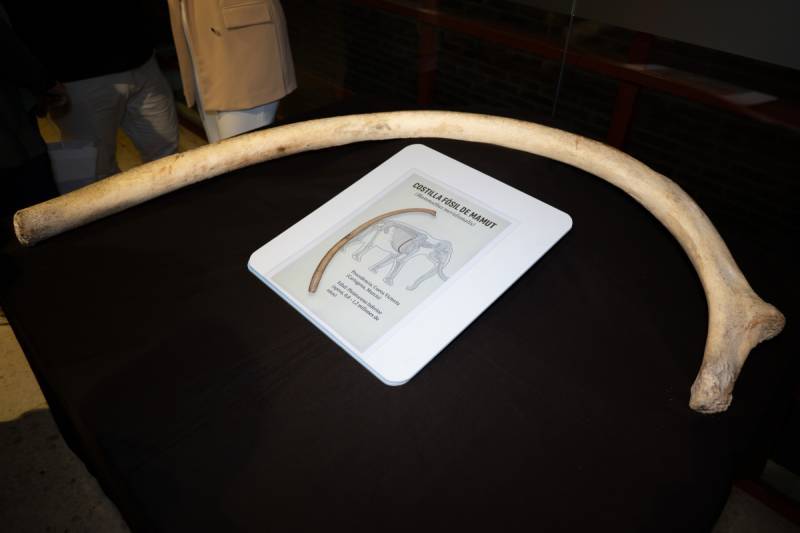 And finally, a quite funny story from Cartagena, where A 2.2-metre rib bone, enthusiastically presented in April as belonging to a 900,000-year-old mammoth, is now suspected of being from a sperm whale. One that may have died less than a century ago. The find, which was donated by a retired miner who’d been using it as home decor, quickly gained attention with Cartagena city council calling it a major find and displaying it proudly in their museum. But scientific scrutiny has followed close behind, and been less than impressed.
And finally, a quite funny story from Cartagena, where A 2.2-metre rib bone, enthusiastically presented in April as belonging to a 900,000-year-old mammoth, is now suspected of being from a sperm whale. One that may have died less than a century ago. The find, which was donated by a retired miner who’d been using it as home decor, quickly gained attention with Cartagena city council calling it a major find and displaying it proudly in their museum. But scientific scrutiny has followed close behind, and been less than impressed.Early excitement about the major find gave way to growing scepticism from researchers, who questioned the rib’s provenance. As it turns out, this “decontextualised” discovery – meaning no one really knows where it came from or when it got there – isn’t necessarily the palaeontological jackpot it first appeared to be. And what’s worse, this debacle might even derail future excavation agreements at the nearby Cueva Victoria site.
A local councillor defended the move to showcase the find, insisting that if an expert says it’s a mammoth, who’s he to argue? “If an expert tells me it’s a mammoth bone, I believe it.” But as any museum curator or even amateur fossil hunter might tell you, it’s always best to check twice before labelling your exhibit. Especially if the star attraction might have spent more time swimming in 20th-century seas than trampling through the Ice Age! Further tests are being carried out as we speak…
As ever, we’ve a little taster for you of what’s going on in Murcia this weekend, from the free concerts taking place at the Cartagena Folk Festival and the Moors and Christians celebrations in Jumilla to the Rojo & Red Japanese food fair in Mazarrón and the alternative arts fiesta in Los Alcázares, not to mention that children can get in free to Terra Natura zoo and water park this weekend (when accompanied by a paying adult!) as a special deal on for the Region of Murcia Day.
For more ideas of things to do in Murcia, you can always see our EVENTS DIARY, accessible at any time on our website:
Spain
The sudden upswing in the weather has brought more than just sunny skies and longer evenings. Living in Spain, most people are used to all sorts of creepy crawlies putting in an appearance during the summer months but this year, a rather unusual visitor is taking over: the giant moth.
These oversized night-time visitors, usually around three to five centimetres long, have been spotted all over Spain in the last couple of weeks. The moment the sun goes down, they seem to appear out of nowhere. While many people think moths are drawn to lights, experts say it’s actually the high temperatures that are encouraging them to come out in force.
The good news is that they’re harmless. They don’t bite, and they don’t carry diseases. Still, they can be a bit of a nuisance, especially when they’re flapping around your living room.

The best way to keep them out is to close your windows and doors in the evening, of course – easier said than done when you want to let a cool dusk breeze into the house. Mosquito nets can help too, and it’s worth checking your kitchen cupboards and pantry just in case they find their way inside.
Many of these moths come from Africa and head north as temperatures rise. Like butterflies, they feed on nectar and plant juices. They’re active at night and are just taking advantage of the warm weather, much like the rest of us.
So, while there’s no reason to worry, you might want to double-check your window screens. These moths might be loving the heat, but that doesn’t mean we want them joining us for dinner.
Back in March, Spain announced a plan to relocate thousands of unaccompanied migrant children from overcrowded facilities to towns and cities across the country. Most places weren’t thrilled by the prospect but the government is pushing ahead with the plan.
However, the decision has been made to only rehome youngsters from centres in the Canary Islands, Ceuta and Melilla, where the overcrowding is most severe. To give you an idea of the scale of the problem, the Canary Islands are housing more than 5,500 minors, far exceeding their capacity of 718.
Under the new law, every region in Spain (except the three mentioned above and the Balearic Islands) must now make space for these children, whether they like it or not.
While the government is remaining tight-lipped about exact numbers or destinations, regions like Andalucía, Madrid and the Valencian Community are expected to receive many of the minors.
The authorities are determined to begin moving the children and adolescents sometime over the summer, regardless of whether the regional governments agree.
More than five years after Covid-19 first turned the world upside down, a new variant is causing scientists some concern.
Called NB.1.8.1, this strain is a descendant of Omicron and was first identified in January 2025. It’s now being tracked by the World Health Organisation due to a rise in global cases and hospitalisations.
This variant has already become dominant in places like Hong Kong and China and has been detected in popular holiday spots such as Egypt, Thailand and the Maldives. It’s also been found in several US states and confirmed in Spain, though officials haven’t said where exactly.
While the last thing we need to hear is that Covid might be making a comeback, the WHO says there’s no need to panic. The current risk to the public is still considered low, and existing vaccines are expected to hold up well against this version of the virus.
Furthermore, there’s no sign that NB.1.8.1 causes more severe illness than previous strains, and no travel restrictions are being recommended.
Experts do warn, however, that the variant might spread more easily and partially bypass immunity from past infections or vaccines. Symptoms are likely to be the usual Covid ones – cough, fever, fatigue and so on.
Spain has just closed the books on a record-breaking April for tourism, and there is one clear trend so far this year: more people, more spending and more travel variety. At the heart of this surge are British visitors, who not only topped the charts for arrivals but also for the money they spent while here.
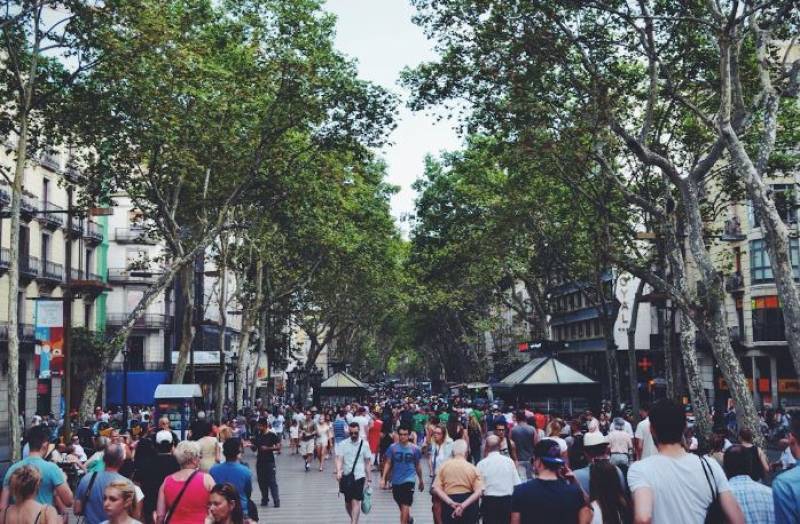
A massive 8.6 million people from all over the world visited Spain in April, mainly during the Easter holidays. That’s not just a small bump from last year, it’s a full 14% jump, and the highest number of tourists ever recorded in a single month.
Together, these travellers spent more than €10 billion while they were here, with British tourists parting with the most cash.
Unsurprisingly, the UK once again came out on top as Spain’s biggest fanbase. More than 1.6 million Brits landed in Spain in April alone, an increase of around 11% compared to the same time last year. They were followed closely by visitors from Germany and France, who each sent just under 1.3 million people to enjoy the Spanish sunshine.
When it came to spending, British holidaymakers were responsible for more than 16% of the total money spent by international visitors. German tourists followed with almost 15%, while the French made up around 9%.
So where are all these visitors heading? Catalonia was the most popular region in April, pulling in just over 20% of international tourists. Andalucía wasn’t far behind with more than 16% and the Balearic Islands rounded out the top three with almost 16% as well.
Alicante
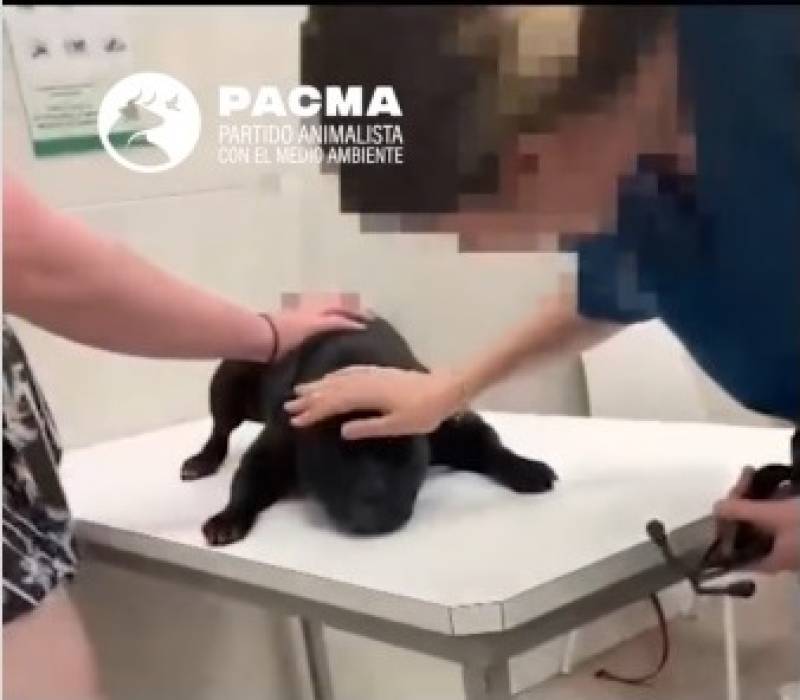 Sunbathers at a packed Aguamarina beach in Alicante were shocked and horrified earlier this week when a French woman was spotted drowning her dog in the sea. Several people tried to save the poor animal once they realised what was happening but they were sadly too late, and the dog’s lifeless body was pulled from the water.
Sunbathers at a packed Aguamarina beach in Alicante were shocked and horrified earlier this week when a French woman was spotted drowning her dog in the sea. Several people tried to save the poor animal once they realised what was happening but they were sadly too late, and the dog’s lifeless body was pulled from the water.Local police have opened an animal abuse case and complaints have been filed by witnesses and animal protection groups. PACMA called the incident an act of cruelty and urged tougher laws to protect animals.
Under Spain's Animal Welfare Law, this kind of abuse carries serious penalties and the woman is facing a prison sentence, hefty fine and a possible ban from owning or working with animals.
This tragic case comes as the ongoing debate about animal welfare heats up again in Denia, where the controversial ‘Bous a la Mar’ festival is set to take place. This event, part of the town’s main fiestas, involves participants provoking bulls to chase them and jump or be pushed into the sea, and it causes uproar every year.
This unconventional kind of bull run is only held in a few coastal towns but has been named a Fiesta of National Tourist Interest since 1993. PACMA has once again asked the local council to cancel this year’s event, pointing to the suffering caused to the bulls and risks to public safety.
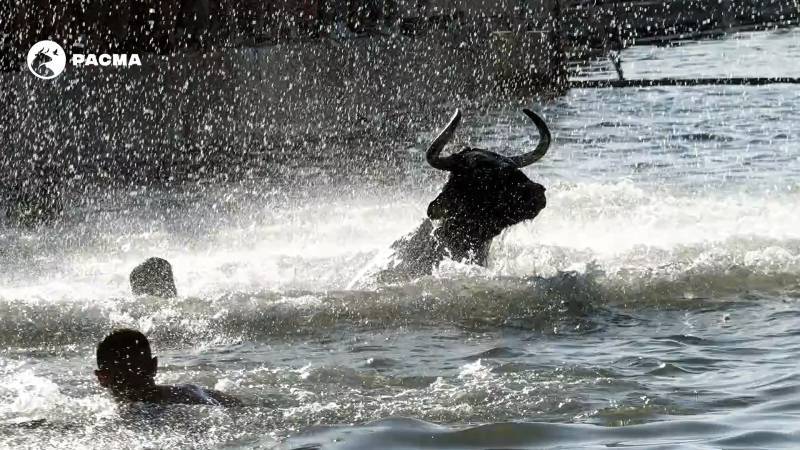 Past events have seen bulls drown or get seriously injured, and dozens of people were hurt during the 2022 celebrations. PACMA argues that this tradition no longer fits with modern values and suggests replacing the event with cultural or sporting activities that celebrate local identity without harming animals.
Past events have seen bulls drown or get seriously injured, and dozens of people were hurt during the 2022 celebrations. PACMA argues that this tradition no longer fits with modern values and suggests replacing the event with cultural or sporting activities that celebrate local identity without harming animals.But for now, if nothing changes, the controversial Denia festival looks set to go ahead at the beginning of July.
Meanwhile, the Guardia Civil in Alicante has launched an investigation after a decomposing body was found floating near Tabarca Island last weekend.
The body, which appears to have been in the water for weeks, was spotted by a passerby who put in a call to the emergency services and recovered by maritime responders. A post-mortem has since confirmed that the deceased was a woman believed to be between 30 and 40 years old.
Authorities suspect she drowned trying to cross the Mediterranean by boat, with some experts suggesting she may have been in the water for up to two months.
Her identity is still unknown, and police continue to investigate the circumstances of her death.
Andalucía
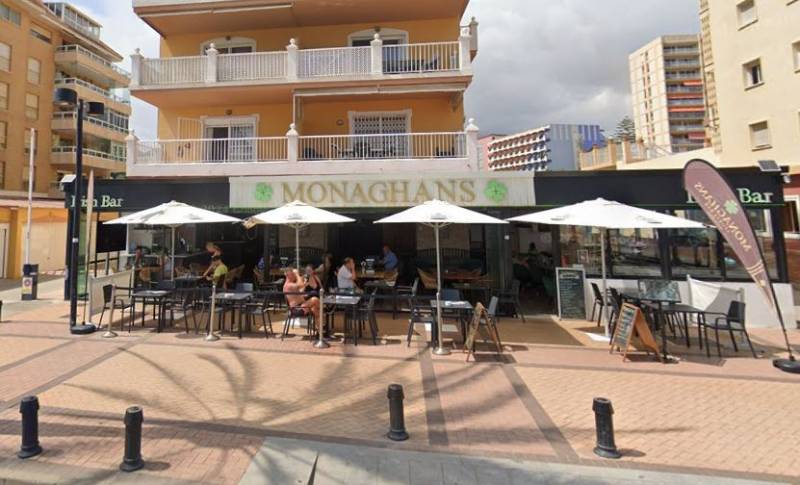 Sad news from the Costa del Sol as two men from Scotland were killed in a targeted shooting late last Saturday. The attack happened at Monaghans, a busy Irish-themed bar located along the Paseo Marítimo Rey de España in Fuengirola, opposite Martín Playa beach bar.
Sad news from the Costa del Sol as two men from Scotland were killed in a targeted shooting late last Saturday. The attack happened at Monaghans, a busy Irish-themed bar located along the Paseo Marítimo Rey de España in Fuengirola, opposite Martín Playa beach bar.A masked gunman entered the venue just after 11pm and opened fire, killing both men at the scene and injuring a third. The bar was reportedly full of tourists and football fans watching the UEFA Champions League final. The attacker fled in a waiting car.
Emergency services arrived within minutes, but despite their efforts, neither victim could be saved. Authorities later identified the men as Ross Monaghan and Eddie Lyons Jnr, figures connected to the Lyons crime clan in Glasgow.
Spain’s Policía Nacíonal believe the shooting was part of a gang-related dispute. No arrests have yet been made, and investigators from the violent crime division are leading the inquiry.
The shooting is the latest in a series of violent incidents along the Costa del Sol, prompting renewed concerns about organised crime in the area. Officials say extra security measures remain in place under the Costa del Sol and Marbella Plans, designed to crack down on gang activity.
While alarming, police maintain that this was a targeted incident and not part of a broader spike in violent crime.
What is climbing are the temperatures, of course, and Andalucía’s summer fire season officially got underway at the beginning of this month, which means that barbecues are banned in many areas until mid-October.
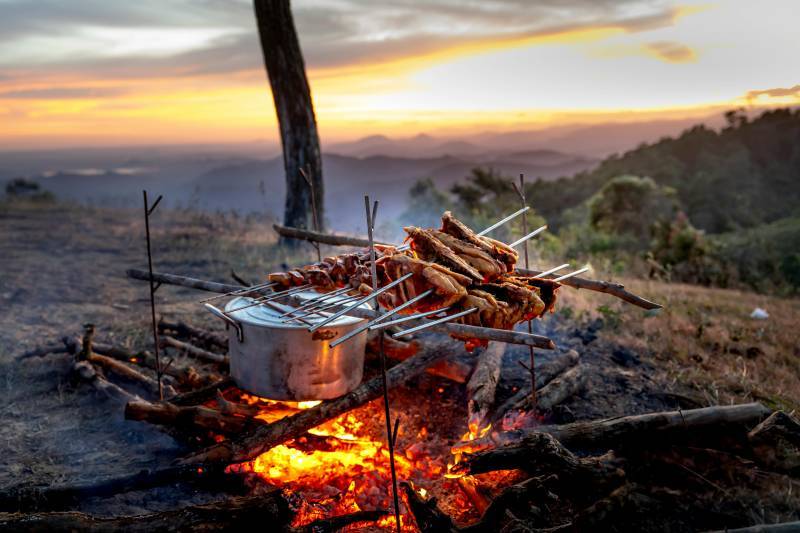
Under regional fire prevention laws, the use of barbecues, controlled burns and motor vehicles is now prohibited in forested areas and on land within 400 metres of woodland. These restrictions will remain in place until Tuesday October 15.
Antonio Sanz, Minister of the Presidency, said the aim is “to prevent negligent or accidental situations that could lead to forest fires, as well as to protect Andalucía’s natural environment during the period of greatest fire risk.”
And they have good reason to be cautious. After months of much-needed rain across Andalucía early this spring, authorities are now sounding the alarm over a sharp increase in the risk of wildfires.
The heavy rainfall that helped ease the region’s pervasive drought has led to a surge in plant growth, which is now drying out rapidly as the summer heat builds, creating the perfect conditions for fires to spread. Honestly, if it’s not too dry, it’s too wet!
For these reasons, barbecues are not allowed in public picnic zones, even those usually equipped for cooking. However, some exceptions apply for rural hotels, restaurants and youth camps, but only with prior authorisation from the regional government.
It’s also worth checking your local rules. Private barbecues on terraces or in gardens are not automatically banned, but some municipalities do impose additional restrictions. Authorities are urging the public to remain alert and to report any signs of smoke or fire immediately by calling 112.
And finally, some positive health news to round out the week. Researchers at the University of Málaga have developed a groundbreaking at-home test for early prostate cancer detection – and it’s expected to hit pharmacy shelves across Spain by the end of 2025.
The kit, called Testeavida, uses a urine sample to detect genetic markers linked to prostate cancer, offering a non-invasive alternative to rectal exams and biopsies. It includes a handheld digital reader that delivers results in just 15 minutes using a green-amber-red traffic light system to indicate risk level.
The project began in 2022 as a student initiative and has since grown into a university spin-off company, UMA-Diagnostics, which now holds international patents and full certification for pharmacy use.
In trials, the test was shown to reduce the need for unnecessary biopsies by around 40 percent and could help cut late-stage prostate cancer diagnoses by 18%.
With prostate cancer affecting more than 35,000 men in Spain in 2020, this new test developed by Spanish researchers could become a game changer, especially for those who don’t fancy getting a full prostate exam each year!

You may have missed…
- Murcia photo of the month June 2025.
Here's the top image of the month taken by the Los Alcázares Digital Camera Club (LADCC) on the theme of 'Weather'. Certainly plenty to get your teeth stuck into there! - From summer solstice to shooting stars… a guide to Spain’s spectacular June sky.
For those of us lucky enough to live in Spain, the night sky offers a constant source of wonder. Last month, the beautiful Flower Moon reminded us of the magic that happens overhead. Now June is here and it is packed with spectacular celestial events that promise to delight stargazers from start to finish. In fact, the Spanish Astronomical Association predicts that June will be one of the most active months of 2025! - Risk a €30k fine for carrying these items in your Spanish car.
We all know that driving in Spain comes with its fair share of rules and regulations. But while most of us remember to wear seatbelts and stick to the speed limit, there is another side to road safety that often gets overlooked. It has to do with what you are carrying inside your car… - 7 key factors for choosing a good health insurance in Spain.
The climate, gastronomy and culture mean that many people decide to move to Spain, and it’s important to have good quality health insurance that also meets the requirements for obtaining a Visa and Residence permit. But do you know what to look out for when choosing a good company? Here are some key factors, according to expert health insurers Asssa. - Spanish village offers free house to anyone willing to run the local bar.
In another one of those periodical stories about tiny, abandoned villages in Spain trying desperately to reverse the trend of depopulation, the Soria pueblo of Beratón (population 40) is looking for someone to take over its bar, and will even offer a free house to anyone willing to take up the offer!
And we’ve reached the end of this week’s edition. Flies by, doesn’t it? Lucky there’ll be another one coming next week...
Have a great weekend!
Contact Murcia Today: Editorial 000 000 000 /
Office 000 000 000
















